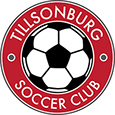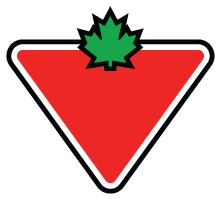Parent Resources
Policies & Procedures
Important information for health, safety and a better game.
Severe Weather
Concussions
LTPD FAQs
Severe Weather Policy
Revised Saturday, February 17, 2024
In general, games and training will proceed rain or shine. Participants are responsible to check the weather report and dress appropriately.
The safety of the participants is the primary concern when considering whether or not to modify, delay, or cancel a game or training session. Extreme heat or the presence of lightning, hail, torrential rain, freezing rain, or extremely high winds may all pose safety concerns. In the event of cancelling for weather, TMSC will adjust the end of the year from practice to game for the last week of soccer only. TMSC cannot extend the soccer season for scheduling purposes and field maintenance.
Decision Makers
During or prior to beginning a training session, the coach or team manager is the main decision maker regarding whether to modify, delay, or cancel training due to severe weather.
During or prior to beginning a league game, the referee is the main decision maker regarding whether to modify, delay, restart, or cancel a match due to severe weather. Teams will be directed to take proper shelter and must remain at the venue until the referee restarts the game or declares a postponement.
The Referee Coordinator, the Director of Facilities, the Director of Operations, or the Club President has the right to cancel all events and close the park due to severe weather. Division Conveners will communicate to team coaches if the park will close due to a severe weather event. Coaches are expected to communicate accordingly with their players.
Lightning
The presence of lighting poses a significant safety concern. When lightning is detected, the distance to the lightning can be determined by counting the time between the flash and the first sound of the thunder. When lightning is seen, count the time until thunder is heard. If this time is thirty (30) seconds or less, seek proper shelter. Wait thirty (30) minutes or more after hearing the last thunder before leaving the shelter.
Concussion Protocols
Revised Thursday, May 18, 2017
A player showing any signs/symptoms of a concussion must be removed from play immediately. All TMSC Coaches / Trainers are required to be familiar with the use of this tool and follow the Club’s protocol without question. The player is not to re-enter the game or practice. A Match official may communicate their concerns with other team players, or technical staff.
- In the event of a loss of consciousness call 911 for assistance immediately.
Do not move the player unless absolutely necessary for safety reasons. - Ensure that a member of the team staff stays with the player.
- Notify any family members immediately if they are present.
- The player must be evaluated by a physician prior to returning to play. Documentation from the physician is required. Average recovery period is 10 -14 days, but can sometimes longer.
Return to Play Stages Protocol
This is a multi-part process that requires supervision from the player’s health care provider at each stage.
- Limited activity > Physical and cognitive rest
- Light aerobic exercise > Walking, swimming, cycling
- Sport specific exercise > Light running skills, no heading
- Non contact training drills > Passing / movement
- Full contact practice > Normal training cycle
- Return to play > Normal game play
* A minimum of 24 hrs is required between each stage. Any recurrence of symptoms requires the player to return to the previous level. Coaches, Assistant Coaches, Managers and Trainers are not authorized to oversee Return to Play processes.
Caution
TMSC is committed to providing a safe environment for all players regardless of age and gender. It is, however, ultimately the responsibility of the teammates, technical staff or parent to ensure that appropriate professional care is provided to players in the event of injury. In the event of a concussion diagnosis, premature return to play can result in serious and sometimes permanent injury, particularly in the event of a second impact. Parents should seek ongoing medical evaluation for the benefit of the player’s long term health and safety.
Long Term Player Development
We can do a better job of giving children the best experience possible in our sport that will ensure all players enjoy the game and develop better skills to play soccer for life.
Canadian Soccer Association (CSA) is leading this change and all provinces and territories are making the transition to implementing Long term Player Development (LTPD). This is a national initiative across all sports in Canada. Every sport has tailored the approach to the needs of their athletes and are at different stages of implementation.
For more information on LTPD in Soccer, please visit Ontario Soccer's LTPD website here.
- Children enjoying soccer more
= keep playing soccer for life - More touches and time on the ball
= improved skill development - Players allowed to make more decisions during practices and games
= players learn to problem-solve,
and be responsible - More qualified coaches that understand players’ needs at each development stage
= increased enjoyment and skill development - Clear development pathway
- The game “grows” as the players grow
= Appropriate sizes fields, goals and balls
Benefits to the Players
- To have fun
- To experience thrills
- To be with friends,
and/or make new friends - To do something they are good at
- To feel good about themselves(Increase self-esteem)
- To feel accepted
- To improve and learn new skills
- To be part of a team
Why Kids Play Soccer
Education for Parents





















